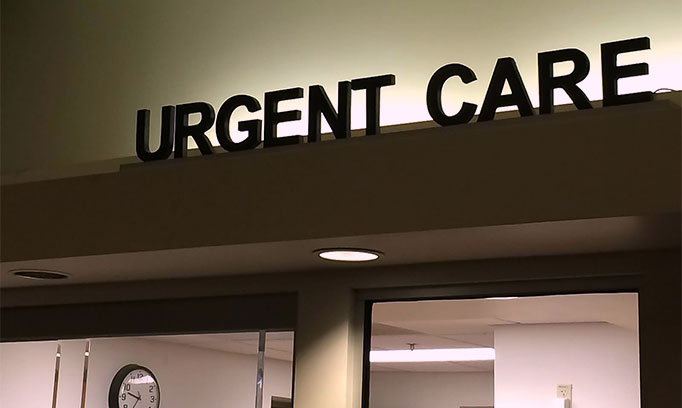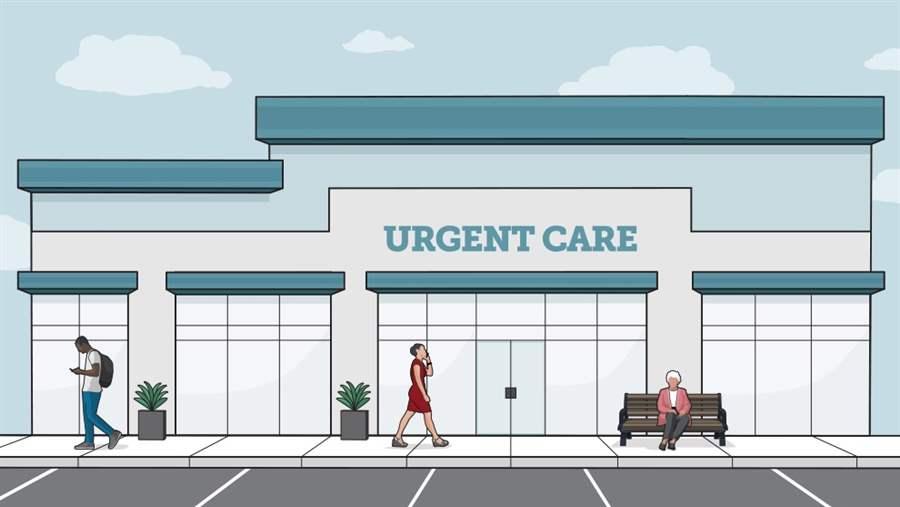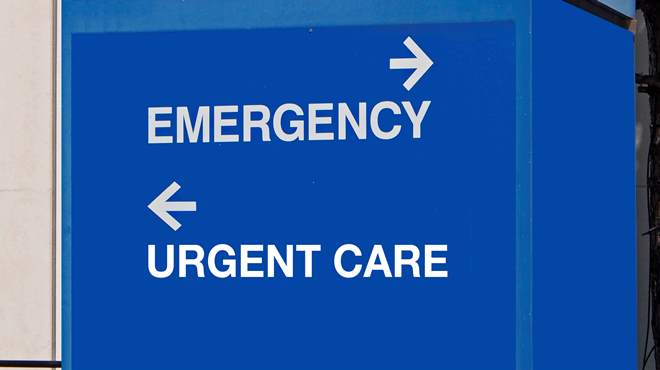Urgent Care vs. Primary Care: Which Is Right for Your Needs?
Urgent Care vs. Primary Care: Which Is Right for Your Needs?
Blog Article
Recognizing the Significance of Urgent Treatment Providers for Non-Life-Threatening Medical Issues
The significance of immediate care solutions for non-life-threatening medical problems can not be overemphasized, specifically in today's healthcare landscape. By understanding the advantages of urgent treatment, such as reduced wait times and price efficiency, one can much better appreciate their role in person wellness monitoring.
What Is Urgent Care?
Urgent care refers to a category of medical services created to deal with non-life-threatening problems that need immediate focus however do not require a check out to the emergency room. These centers provide a bridge in between health care and emergency solutions, supplying available healthcare alternatives for people experiencing intense clinical problems, such as small cracks, sprains, infections, or extreme ailments that arise unexpectedly.

The scope of solutions supplied by immediate treatment centers can differ however usually includes therapy for common disorders like colds, flu, and allergic reactions, as well as small injuries (urgent care). Furthermore, numerous immediate treatment centers provide preventative solutions, such as vaccinations and physical examinations, to resolve broader health and wellness needs. By using a hassle-free alternative for urgent clinical issues, these facilities play a vital function in the medical care continuum, making sure that clients obtain ideal treatment when they need it most
Benefits of Urgent Treatment Services
Many individuals discover that utilizing urgent care services offers considerable benefits over standard emergency clinic check outs or waiting on a medical care consultation. One main benefit is the minimized delay times. Immediate care centers normally have shorter delay periods, enabling clients to obtain timely clinical focus when they require it most. This expedited treatment is specifically practical for non-life-threatening conditions that require prompt intervention.
Another advantage is the extended hours of operation. Lots of immediate care facilities are open nights and weekend breaks, fitting people that may not have the ability to see their health care doctor during routine workplace hours. This adaptability makes it simpler for clients to access care at their ease.
Additionally, urgent treatment solutions often offer a cost-effective choice to emergency clinic. Individuals regularly face lower co-pays and overall costs when looking for treatment for small disorders at immediate care centers instead of medical facility emergency departments.
Last but not least, urgent care facilities are outfitted to deal with a range of non-life-threatening issues, supplying a broad variety of solutions under one roof covering. This detailed technique not just enhances the therapy procedure but also enhances client satisfaction by delivering punctual and efficient care.
Typical Problems Dealt With
What types of non-life-threatening conditions can clients anticipate to receive therapy for at urgent treatment? Immediate care centers are geared up to take care of a large selection of typical clinical issues that need punctual interest yet do not position a prompt risk to life. These centers frequently deal with conditions such as small cracks, strains, and pressures, giving crucial look after injuries that take place during everyday activities or sports.
Furthermore, clients frequently look for treatment for respiratory system infections, including colds, flu, and bronchitis, where timely treatment can alleviate signs and prevent problems. Skin disease such as breakouts, insect attacks, and minor burns are likewise generally resolved, as timely treatment can mitigate discomfort and reduce the risk of infection.

Comparing Urgent Care and Emergency Spaces

One considerable difference exists in wait times; urgent care facilities generally have much shorter wait times compared to emergency clinic, which can be crowded with even more essential situations. This effectiveness permits patients to receive timely treatment for their ailments.
From a monetary perspective, immediate care sees tend to be less costly than emergency clinic check outs. Insurance policy copays and out-of-pocket expenditures are typically lower at immediate care centers, making them a more affordable choice for non-emergency scenarios.
Just How to Pick an Urgent Care Center
Choosing the ideal urgent treatment facility can significantly enhance the quality of care gotten throughout a non-life-threatening clinical issue. When choosing an immediate treatment facility, a number of crucial elements should be thought about.
First, analyze the center's accreditation and licensing. Some urgent care centers specialize in specific areas, while others offer detailed treatment for various medical problems.
Additionally, consider the location and hours of operation. An easily situated facility with prolonged hours can be important for prompt care. It's additionally recommended to inspect the facility's delay times and person evaluations, which can give insights into the total individual experience.
Verdict
Finally, immediate care services play a vital function in dealing with non-life-threatening Visit Website clinical issues effectively. By providing instant attention for numerous problems, these centers boost client accessibility to timely care while reducing the stress on emergency situation areas. The benefits of immediate treatment, consisting of expanded hours and lower expenses, make them a favorable option for individuals looking for timely treatment. Eventually, understanding the value of urgent care facilities adds to enhanced healthcare monitoring and individual contentment.
 By using a practical option for immediate medical issues, these facilities play an essential duty in the medical click over here care continuum, guaranteeing that individuals obtain ideal care when they need it most.
By using a practical option for immediate medical issues, these facilities play an essential duty in the medical click over here care continuum, guaranteeing that individuals obtain ideal care when they need it most.Several individuals find that utilizing urgent care services offers significant advantages over standard emergency space gos to or waiting for a main treatment consultation. Several urgent care facilities are open evenings and weekend breaks, fitting people that may not be able to see their primary care physician during regular workplace hours. Urgent care facilities are created to attend to non-life-threatening problems, such as minor cracks, infections, and ailments, offering a practical alternative to emergency areas for those in requirement of prompt treatment. Some immediate care facilities specialize in certain locations, while others offer extensive treatment for various medical issues.
Report this page